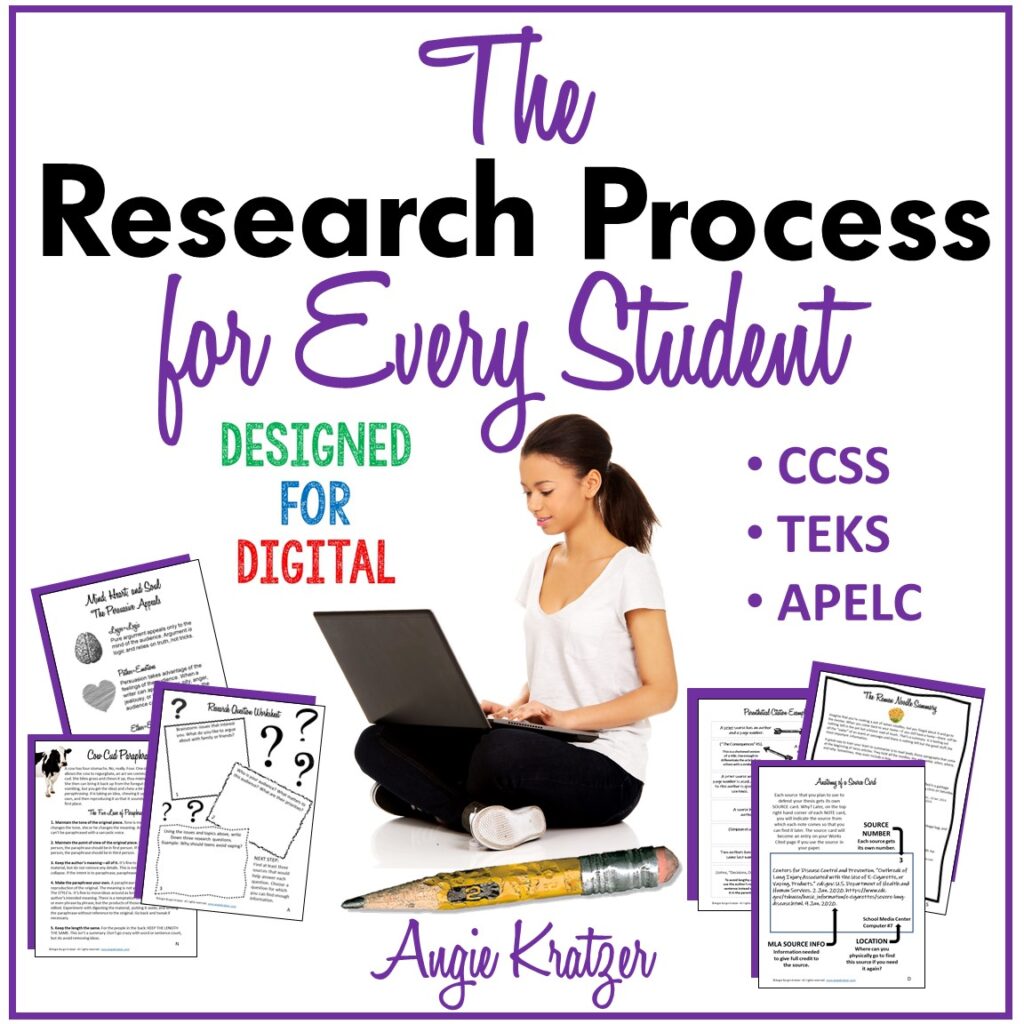
The Research Process for Every Student
This seventeen-lesson unit walks students (and their teachers!) through the research process via a real-world assignment, a researched persuasive speech that each student will deliver to the class and turn in as an MLA-formatted paper. This culminating project will be evaluated twice—once for the written speech and once for its delivery. Along the way, students may receive formative process grades for everything from the preliminary outline to digital or paper note cards, and optional assessments are provided. In order to meet the diverse needs of learners, all materials are provided in both PDF and Google Slides, and the Google Slides include digital source cards and note cards.
A suggested task order is included, but the project timeline is up to the instructor. Although the seventeen lesson plans and their corresponding 42 handouts could technically be facilitated in consecutive class periods, it may make more sense to give students work days in between the lessons or more time outside of class to research, write, and prepare their speeches. This project could also be woven in with a novel unit or used as a segue between AP English Language units on argumentation and synthesis.
This unit can also be found bundled with other helpful resources. Check out
AP English Language & Composition Bundle
AP English Language & Composition No-Lit Bundle

Detect & Dismiss: How to Spot Fake News
This ten-lesson unit is designed to train secondary students to evaluate source credibility and recognize questionable content and “fake news” on the Internet. It is provided in both Google Slides and PDF.
✿Lesson 1: The Problem Students will learn relevant terminology and apply it to an article about students’ inability to distinguish the real from the fake.
✿Lesson 2: Headlines and Sponsored Content Students will learn to analyze the language of headlines and evaluate sites based on native ads and other sponsored content.
✿Lesson 3: Spin Students will compare and contrast how different outlets present and interpret facts.
✿Lesson 4: Hoax Sites and Satire Students will study the characteristics of sites designed specifically to create fake news for different purposes.
✿Lesson 5: Reliability and Bias Students will learn to use the Media Bias Chart to evaluate reliability and bias.
✿Lesson 6: Loaded Language and Faulty Reasoning Students will learn to look for emotional, charged language and logical fallacies.
✿Lesson 7: Deep Fakes and Photoshop Students will be exposed to deep fakes and Photoshop and the way they are used to deceive audiences.
✿Lesson 8: Fact Checking and Source Tracking Students will learn to trace the original source of information and check the facts contained within it.
✿Lesson 9: Context Students will learn to analyze the context of a fact to make decisions about veracity.
✿Lesson 10: Culminating Project Students will complete one of three projects in order to demonstrate their learning or extend their knowledge. Each student may create an infographic, create and track a fake news story, or research the consequences of fake news.
All materials are available on Google Slides. The link is provided in the file upon download.

